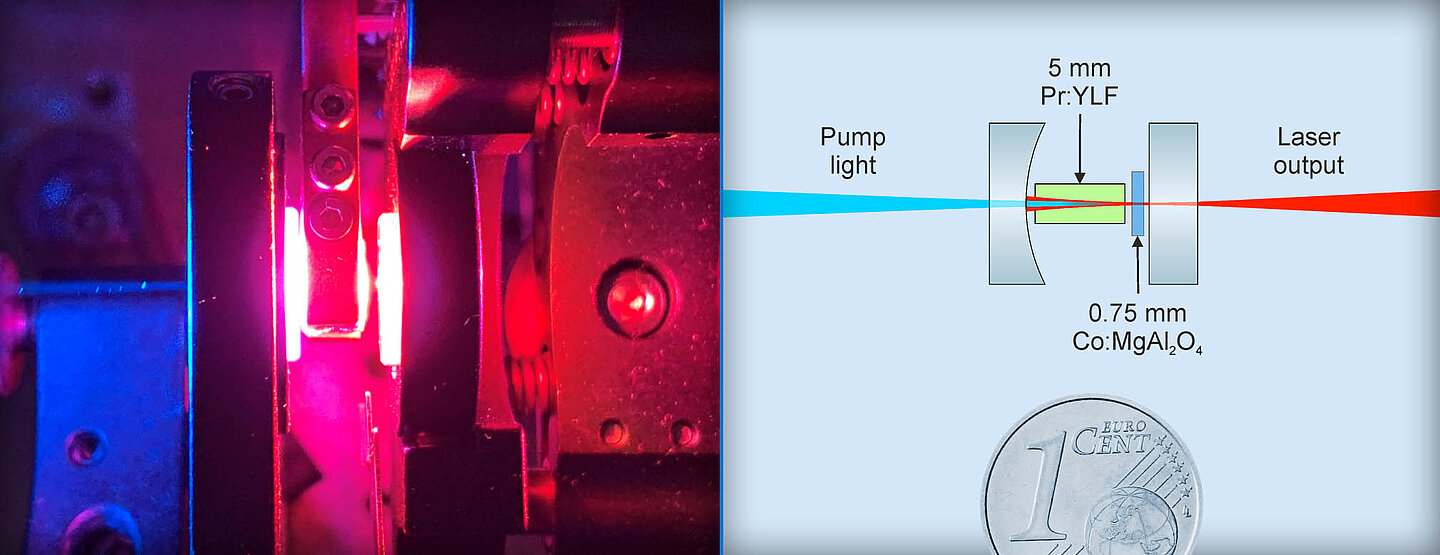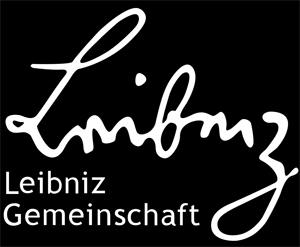In recent years, laser crystals doped with the rare earth ion praseodymium have developed into one of the most efficient methods for the direct generation of visible laser radiation. This progress has been facilitated by the rapid development of InGaN-based blue-emitting laser diodes, which are suitable pump sources for praseodymium-doped laser materials. Different transitions in the trivalent praseodymium enable laser operation in the green, orange, red or deep red visible spectral range. Meanwhile, such laser systems are commercially available, but there are only few reports on pulsed praseodymium-based laser systems so far.
At the IKZ's Center for Laser Materials, a miniaturized pulsed praseodymium laser based on the host material lithium yttrium fluoride (YLF) has now been realized for the first time. By passive Q-switching with a cobalt-doped spinel crystal as a saturable absorber, short light pulses with a duration of less than 10 ns (0.00000001 s) were generated in a laser resonator as short as 7.5 mm.
With a pump power of about 4 watts in the blue, this laser produces an average output power of 1 watt at a pulse repetition rate of 0.78 MHz. The concentration of the red laser light at a wavelength of 640 nm into short pulses, enhances the output power at the peak of the laser pulses by a factor of 200. In this way, the laser reaches a peak pulse power of up to 0.2 kW.
Such increased peak powers are of particular relevance in the field of nonlinear frequency conversion. In frequency doubling processes, for example, the efficiency increases quadratically with the (peak) power. With the laser wavelength of 640 nm achieved here, frequency doubling yields UV light at 320 nm. Thus, this laser could establish itself in the future as a component of a compact and cost-effective system for generating ultraviolet laser radiation.
In contrast to actively Q-switched laser systems, which require expensive and complex fast electronics, in the passively Q-switched system demonstrated here the generation of the short pulses is achieved passively via saturation effects in the saturable absorber. Cobalt-doped spinel crystals are established saturable absorbers for telecommunication wavelengths around 1.5 µm. This work now represents the first proof for the suitability of generating such short passively Q-switched laser pulses in the visible with this material.
These results will be presented as an oral contribution at the CLEO Europe Conference and have been submitted for publication in Applied Physics B.
Further information:
Christian Kränkel
Center for Laser Materials


